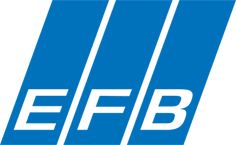Work Packages of the MechJoin-MLD Project

In WP1, the selection of the materials to be investigated and the definition of the boundary conditions will be done. The influence of the joining parameters on the cracking behaviour will be analysed in WP2 and WP3 and joined specimens for further analysis will be produced. The selected joints in WP2 and WP3 will be examined in WP4 (quasi-static and cyclic testing). These work packages will focus on the relationship between joining parameters, crack initiation caused by the joining processes and joint failure. Only by the combination of this information, a statement can be made, which parameters affect the joint quality and failure, regardless of the visual appearance of the closing head after or during the joining process.
Connections where cracks occur and close again during the joining process are investigated in WP5. Here, it is necessary to identify if cold welding effects during mechanical joining of die-cast aluminium, aluminium sheets or magnesium occur and are favourable for the joint quality.
The results from the experimental investigations (WP1 - WP5) are necessary for FE-modelling of the joining processes (WP6). The SPR and clinching process will be simulated without crack propagation. Using these simulations, additional information about the joining processes will be gained (e.g. development of the stress-states during the process), which is not accessible by experimental investigations.
The simulation including crack propagation is done in WP7. This simulation enables a more profound analysis of the joining processes, for example information about the stress state at the joint, especially at the crack. Through the results of the FE-models, mechanical joining of materials with limited ductility can be understood completely and new solutions for joining these materials can be found.
WP8 and 9 focus on the translation of the results to industry-relevant information and guidelines. Concepts for quality assurance will be developed. The possibilities and benefits of the investigated processes will be demonstrated to the industry by manufacturing of demonstrator workpieces, representative for potential industrial applications. Finally, all results of the project will be disseminated and summarised in the form of guidelines, publications and reports (WP9).

